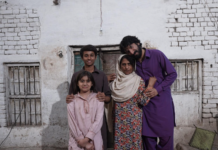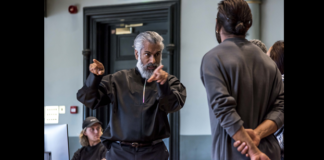The Asian View with Bushra Irfan
IN THIS more and more diverse society where we all desire to integrate with each other and hope and aspire to learn to respect each others customs and beliefs, there is on occasions a clash arising from misunderstandings or lack of knowledge of the others beliefs or cultures.
The most obvious clashes and the ones which have been given great media coverage tend to be the ones associated with the workplace or educational establishment.
The reasoning often given for banning religious symbols and religious items of dress tend to be, as argued in France, that for a secularist society, there must be no displays of religion in public places especially schools and establishments which they feel should be religious free zones.
The law in this country as it stands is governed by the Employment Equality (Religion or Belief) Regulations 2003. In essence, the Act not only provides protection against direct discrimination on the grounds of religion or belief, but also provides protection from indirect discrimination. It is the latter limb under the heading of ‘indirect discrimination’ that the employer is in danger of breaching if any rules or regulations are introduced in the workplace which may be seen to be targeting or affecting a particular sector of the community or religion. If the employer can show that the dress code is affecting security, Health and Safety or prevents the person from doing their job effectively and the dress code is justified then there would be no claim for the individual under this heading.
We may all recall the case of Mrs Azmi, the school teacher who wished to wear the face veil whilst teaching. The school won the case because they were able to bring evidence to show that she could not conduct the job she had been employed to do, namely teach, as effectively with the face veil and thus it was justified as a proportionate means of achieving a legitimate aim.
With regards to Human Rights, there has been the recent case of Sahin v Turkey at the European Court of Human Rights in 2004 where Leyla Sahin was challenging the Turkish ban on headscarfs in higher education institutions in Turkey as being a breach of her basic Human rights to exercise her religion effectively. The ECHR held that whilst they found the ban interfering with her right to manifest her religion it was justified in principle and legitimate in relation to the aims pursued by the country and therefore could be considered to be ‘necessary in a democratic society’.
This case was decided specifically with the view as appropriate to the Republic of Turkey. The decision may not be the same for another person in a different country. However, the main issues that need to be reconciled is the ‘rights and freedoms of others’ and the ‘maintenance of public order’. For similar reasons the case of not being allowed to wear the Jilbab in the case of Shabina Begum at school was not found to breach her Human Rights. If the Institution or Country can justify that the ban is to achieve the above two legitimate aims then the claim is likely to fail on Human Rights grounds.
The school of thought the courts tend to adopt is that of thinking that in a democratic society where there are several religions it may be necessary to place restrictions on freedoms to manifest an individual religion or belief in order to reconcile interests of various groups to ensure that everyones beliefs are respected. Critics of this way of thinking, of course, will state that if everyone is to respect each others religion and beliefs then why would any display or evidence of a person belonging to a particular religion or faith cause any friction? Surely this is a sure sign and acceptance that integration in that learning to accept people as they are with their different cultures and religions is simply not taking place?
Alternatively it could be argued why do people feel the need to advertise something as personal as religion or belief by wearing a symbol or particular piece of attire?
These questions become even more interesting when we consider the cases which have already been brought to our attention and whether or not the item in dispute is actually a religious or cultural symbol.
The case of the Nadia Eweida who was suspended and then reinstated by British Airways for wearing a cross brought much speculation amongst the public as to the wearing of religious symbols. Whilst the cross is a religious symbol the same cannot be said of the recent case against British Airways concerning Amrit Lalji who was dismissed for wearing a nose stud. The reality of the situation is as the Hindu Council of UK has explained that the nose stud is worn not for religious reasons but for cultural reasons.
The same could be said of the Hijab or the Jilbaab or the face veil. Although mostly used by Muslims to cover their head, body or face, these are merely items of clothing. Wearing a long cloth to cover a persons body does not mean that person is a Muslim – in fact Jews (and Nuns) also wear a long cloth to cover their bodies.
The Muslim religion merely requires the woman to be modestly. How severely she wishes to interpret this and what item of clothing she uses to achieve this aim is up to the person concerned. The Hijab is merely a convenient item of clothing used to cover the head. Wearing any form of cloth, a veil or a Chaddar would also suffice. The point is that the Hijab, Jilbaab or face veil itself is not an actual religious requirement but could be classed as cultural. Therefore technically none of the above could be used as being essential to conduct their religion and therefore not being allowed to wear the particular item cannot be construed to interfere with their religion.
However, if an institution states that no person is allowed to cover their head or body, this may be considered to be an extreme violation of some peoples culture or belief but not necessarily religion itself. How well the cultural factor can be incorporated into ‘belief’ is the point to consider before embarking on challenging any decision.
It is the lack of knowledge that leads to fear and insecurity. I still say, in an integrated society which is supposed to be our aim, why should it matter what anyone is wearing so long as they are covered respectively and it does not interfere in the work they are conducting. Surely that is the only way we can say that we are a truly integrated society accepting and respecting everyones beliefs and cultures?




































